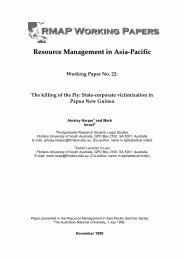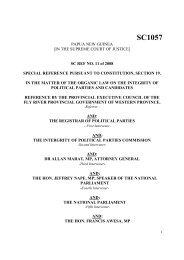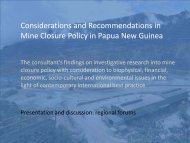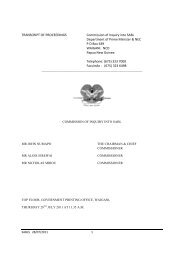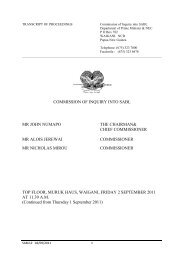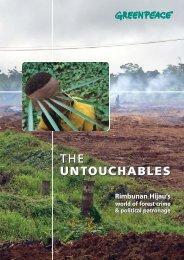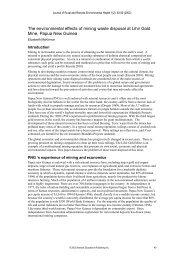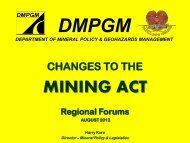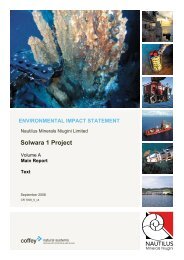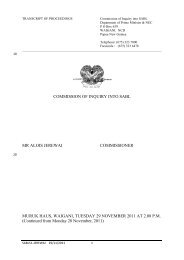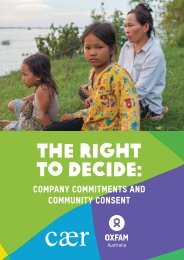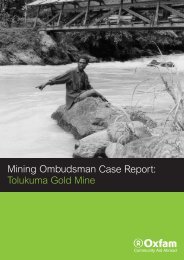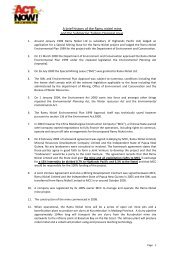Fishy business. The Social Impact of SST.pdf - Act Now!
Fishy business. The Social Impact of SST.pdf - Act Now!
Fishy business. The Social Impact of SST.pdf - Act Now!
You also want an ePaper? Increase the reach of your titles
YUMPU automatically turns print PDFs into web optimized ePapers that Google loves.
Yours faithfully,Daniel Yakeri<strong>Act</strong>ing Town Manager3. WWF Materialsa. Bismark Solomon Seas Ecoregion report<strong>The</strong> Bismark Solomon Seas Ecoregion has been identified by WWF as a ‘cradle <strong>of</strong> marinebiodiversity’ for the South Pacific. In effect, this means that the need for its conservationprecludes national or local development plan, or even regional environmental precautions. Thisregion is a vital organ to the corpus <strong>of</strong> South Pacific seas and waterways. <strong>The</strong> Wewak—SepikCoast and Estuary in particular, if you look below at the report maps, is an area <strong>of</strong> high coastalproductivity (with chlorophyll A levels <strong>of</strong> 4-60 mg. cm3). It also hold crocodile populations,habitat for deepwater snappers, dugong feeding grounds, spawning grounds for mackerel,habitats for coral, seagrass and mangroves, and 10 endemic freshwater fishes. <strong>The</strong> NorthPapuan Sea area, more generally, houses the migration routes for skipjack, yellowfin and bigeyetuna, and their feeding grounds and aggregation areas. It is only when we rack our focus back tosee how biologically dense this region is, compared to neighboring Polynesia and Micronesia,that we can appreciate the importance <strong>of</strong> PNG’s waters to the entire South Pacific, and the realvalue <strong>of</strong> the country’s marine resources.According to WWF, however, critical threats to the BSSE include growing coastal populationsand poorly designed coastal developments—including industry and mining; unregulated fishing,e.g. overharvesting, destructive techniques; increasing market demand for particular marinespecies (sea cucumber, shark fins); lack <strong>of</strong> scientific data and monitoring capacity; irresponsibleand insensitive toruism practices; climate change and coral bleaching events.Needless to say, a hastily planned tuna loinery, even with state <strong>of</strong> the art wastewater treatment,and the encumbant plans for more fish processing plants along the Wewak Harbor, not tomention the rising potential for unregulated and distructive overfishing, represent seriousenvironmental threats to the Wewak, the East Sepik Islands, and the BSSE in general. <strong>The</strong>silver lining may be that <strong>SST</strong> nauseating stench and the sludge that now regularly floats close tothe shoreline are all deterrants to what was once the ESPG’s major industry, tourism; but it’shard to imagine how swimmers and divers could wreak as much damage to the environment ashas <strong>SST</strong>.p2:<strong>The</strong> Bismark Solomon Seas Ecoregion: A Cradle <strong>of</strong> Marine Biodiversity, WWF SouthPacific Programme, 200372



